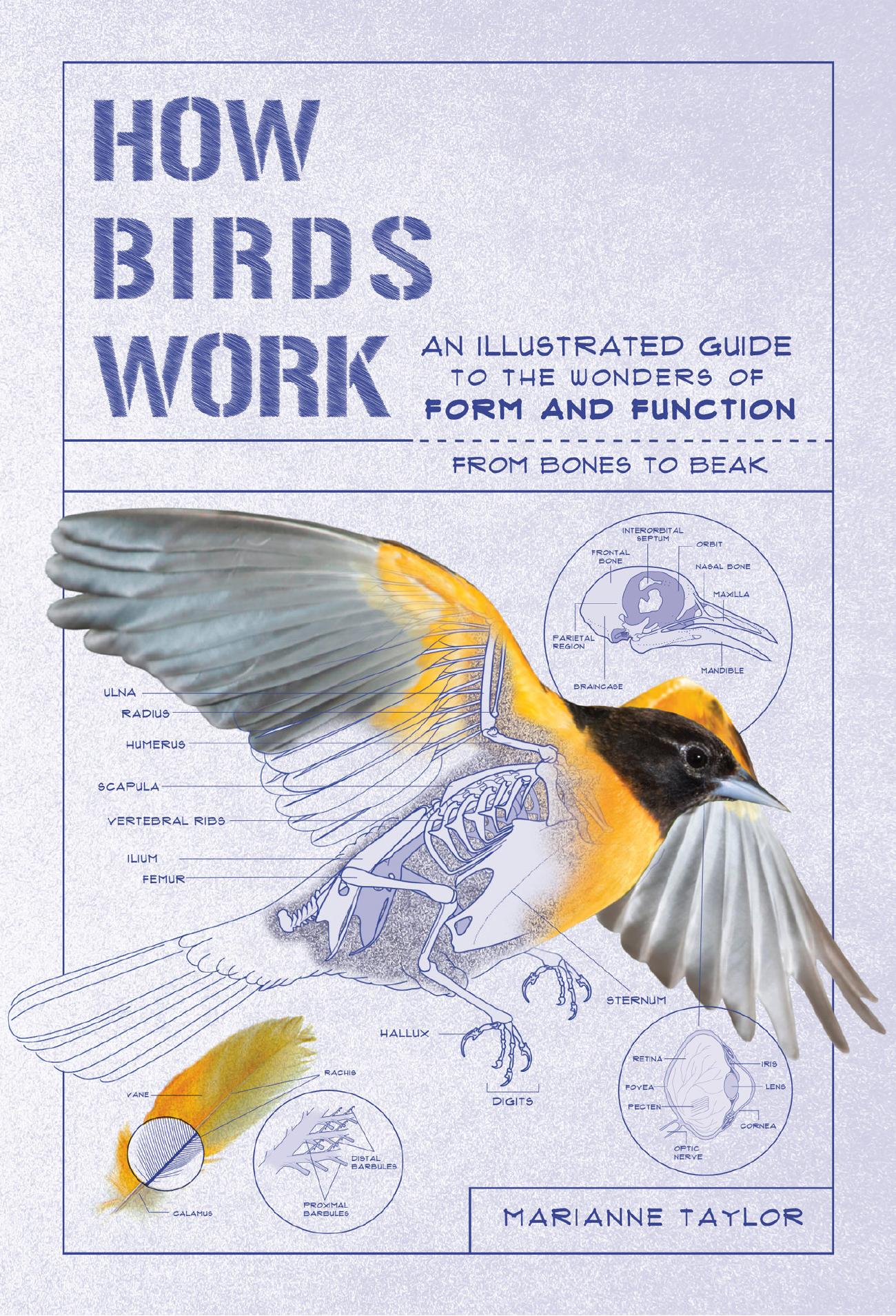How Birds Work by Marianne Taylor

Author:Marianne Taylor
Language: eng
Format: epub, pdf
Publisher: The Experiment
Grasshopper Warblers produce a continuous, reeling song of very rapid clicking sounds, resembling the song of a grasshopper.
This diagram shows a typical songbird syrinx.
Nightingales, like many accomplished avian songsters, are shy by nature and have drab plumage.
Alternative sounds
Some birds make their territorial sounds through other means. Snipes produce theirs by fanning out their tail feathers in fast, diving flight. The outer tail feathers are much less rigid than the inner ones, and flap back and forth in the air when the bird flies fast, creating a strange, bleating note. Woodpeckers “drum” very rapidly on hollow, resonant wood, producing a short phrase of hammered “notes.” Their hugely long tongues, which wrap around the back of the brain, help shield them from head trauma while they drum. Several bird species, including the Common Woodpigeon, some nightjars and the Short-Eared Owl, produce loud wing-claps in flight, as part of their courtship “song.” This sound is produced simply by allowing the wings to strike each other above the body at the end of the upward stroke.
As we saw earlier, some birds have modified tracheae and syrinxes that enable them to produce louder sound. The Kakapo, a curious flightless parrot native to New Zealand, has a different way of increasing the effectiveness of its calls. The male digs several saucer-shaped “bowls” in the ground, and these serve to amplify his deep, booming calls, allowing them to carry for about 3 miles (5km). Females that are impressed by the sound will walk across the forest floor to find the male and mate.
Download
This site does not store any files on its server. We only index and link to content provided by other sites. Please contact the content providers to delete copyright contents if any and email us, we'll remove relevant links or contents immediately.
| Excursion Guides | Field Guides |
The Lonely City by Olivia Laing(4120)
Animal Frequency by Melissa Alvarez(3755)
All Creatures Great and Small by James Herriot(3516)
Walking by Henry David Thoreau(3234)
Exit West by Mohsin Hamid(3183)
Origin Story: A Big History of Everything by David Christian(3139)
COSMOS by Carl Sagan(2950)
How to Read Water: Clues and Patterns from Puddles to the Sea (Natural Navigation) by Tristan Gooley(2855)
Hedgerow by John Wright(2776)
The Inner Life of Animals by Peter Wohlleben(2766)
Origin Story by David Christian(2683)
How to Read Nature by Tristan Gooley(2665)
Project Animal Farm: An Accidental Journey into the Secret World of Farming and the Truth About Our Food by Sonia Faruqi(2661)
How to Do Nothing by Jenny Odell(2645)
A Forest Journey by John Perlin(2587)
Water by Ian Miller(2584)
The Plant Messiah by Carlos Magdalena(2453)
A Wilder Time by William E. Glassley(2363)
Forests: A Very Short Introduction by Jaboury Ghazoul(2335)
